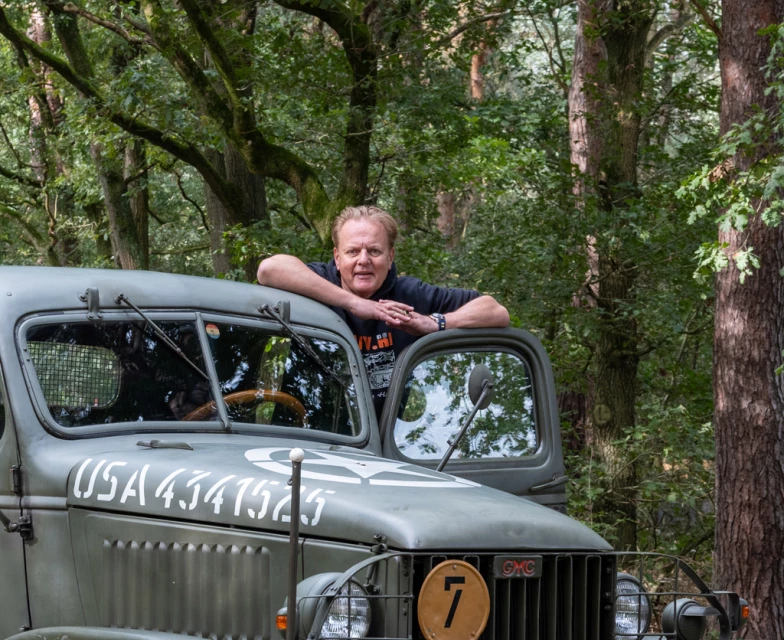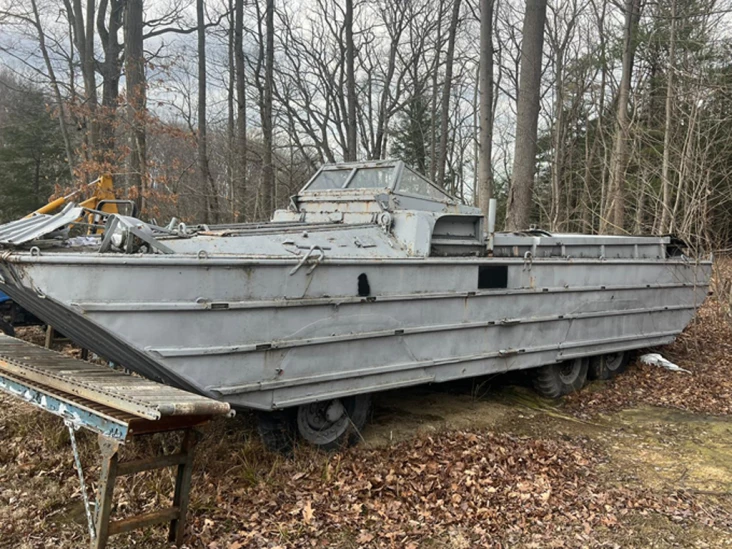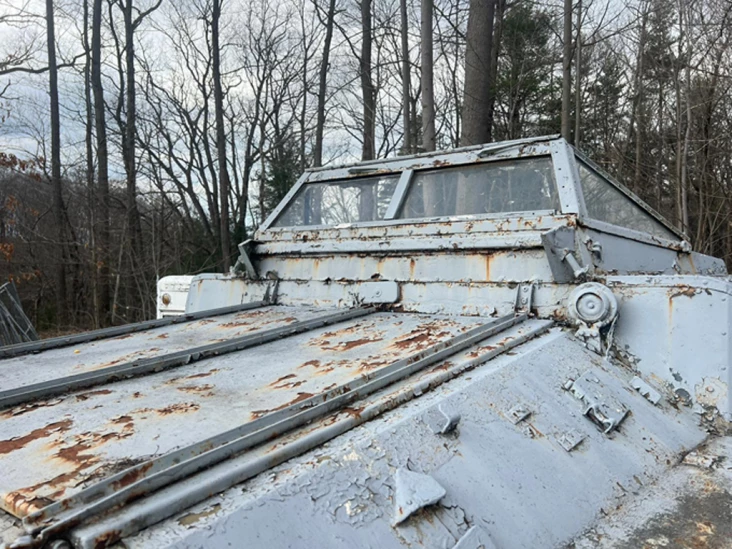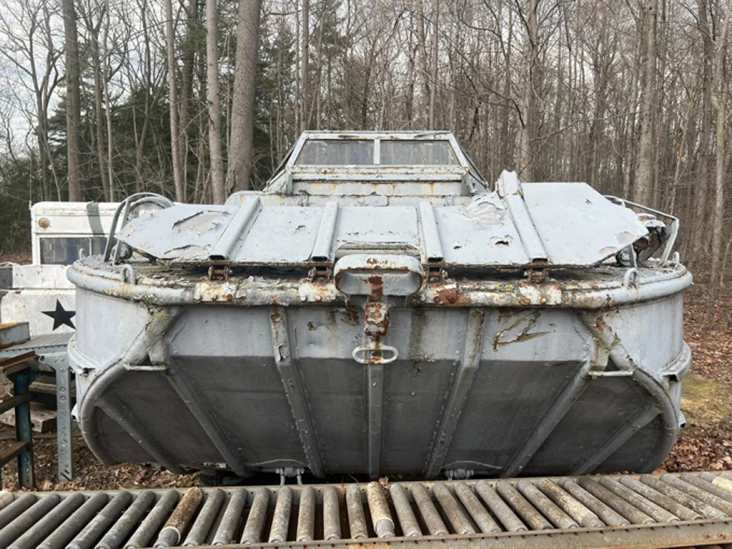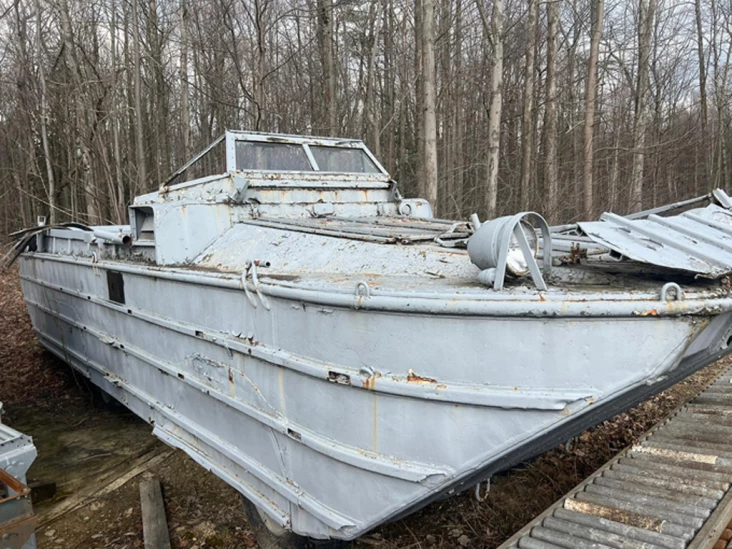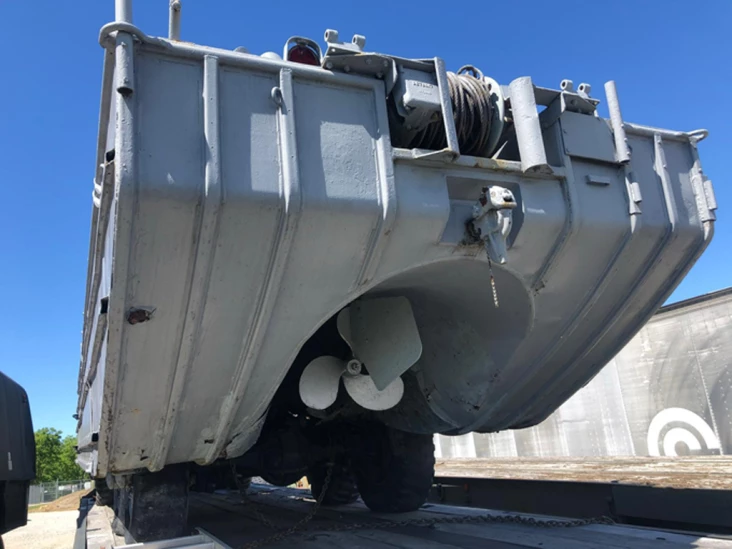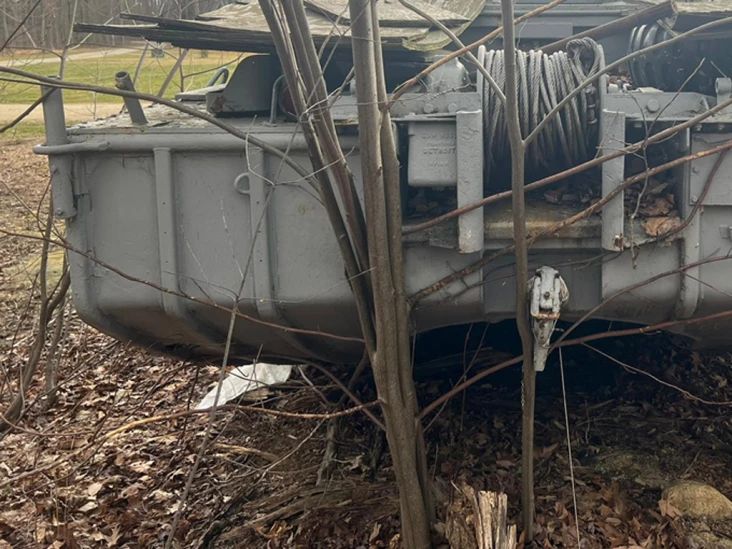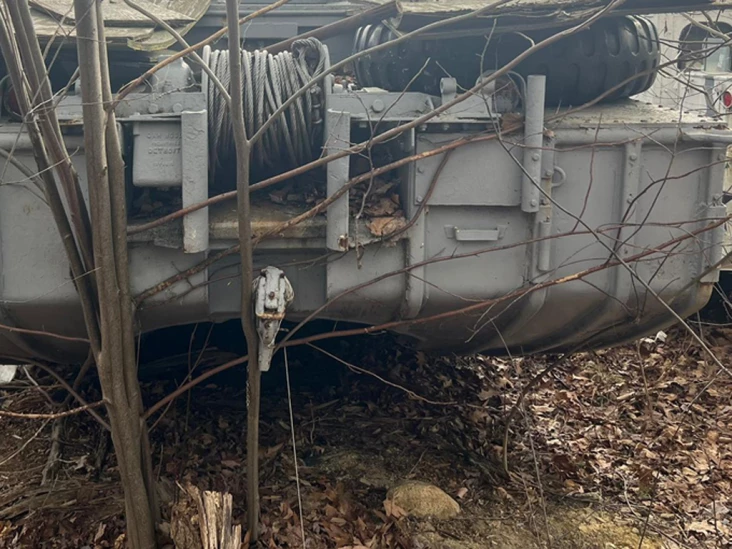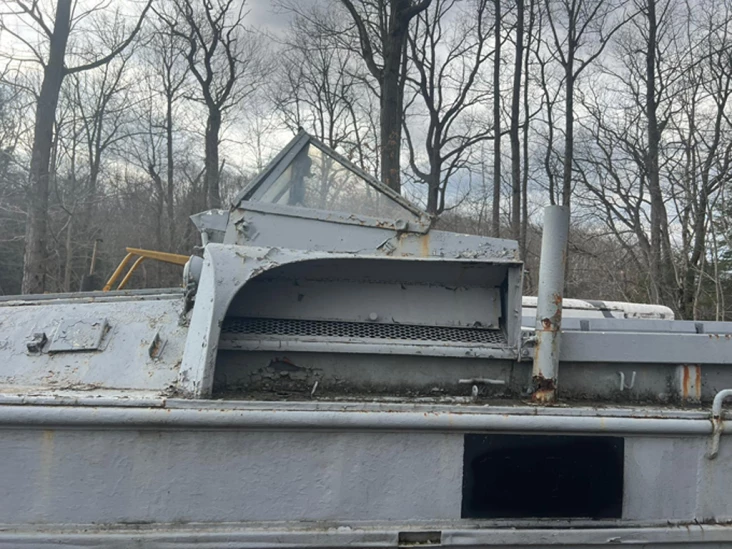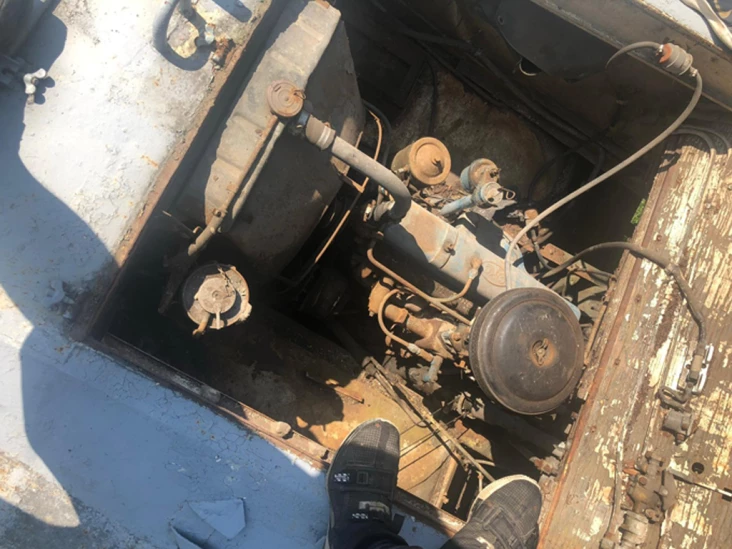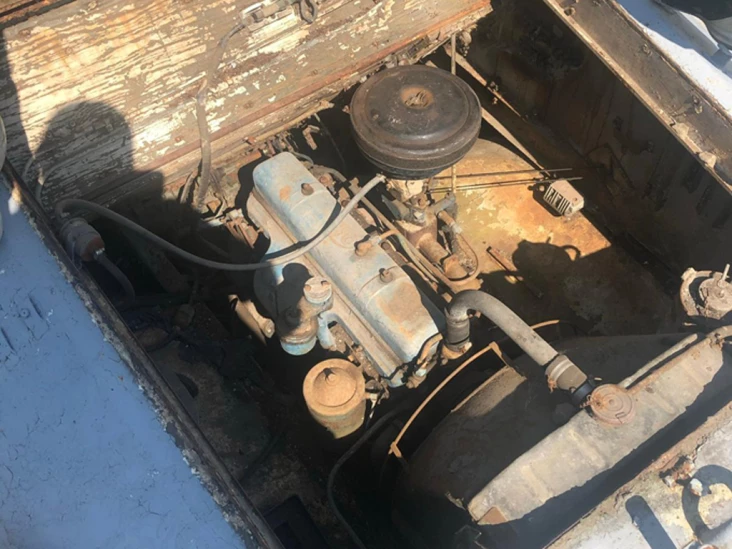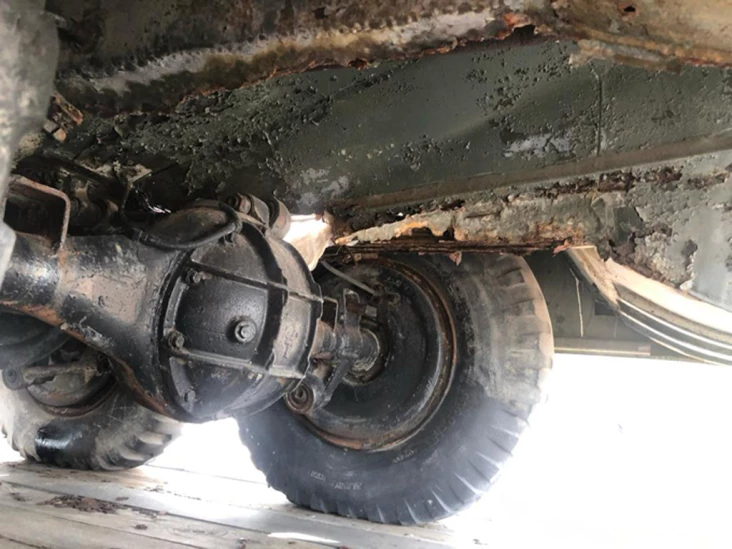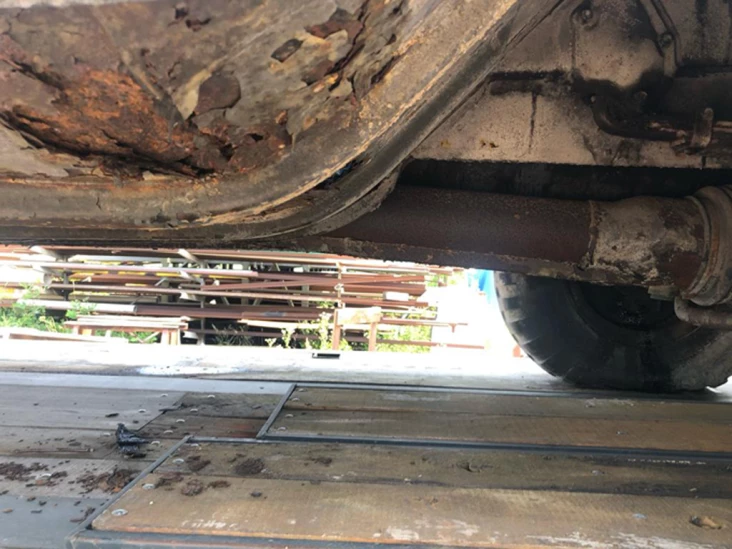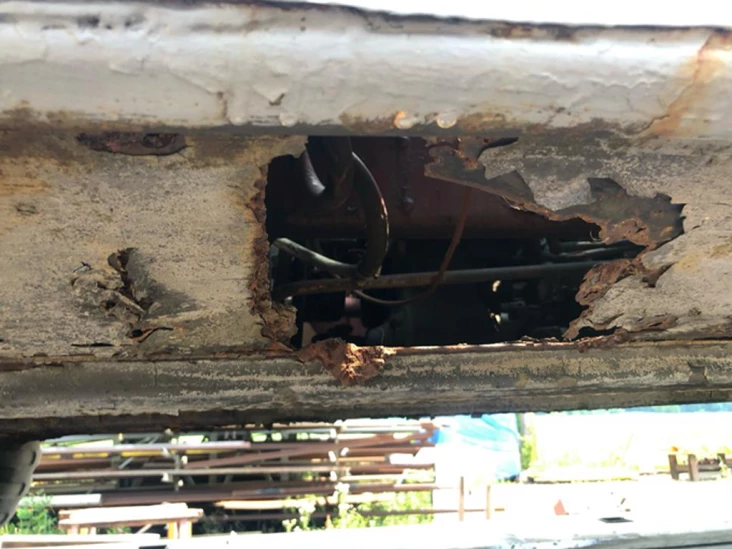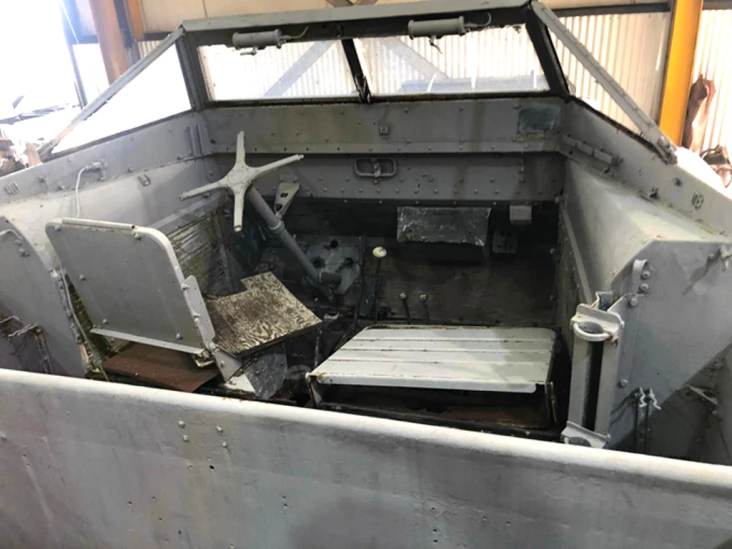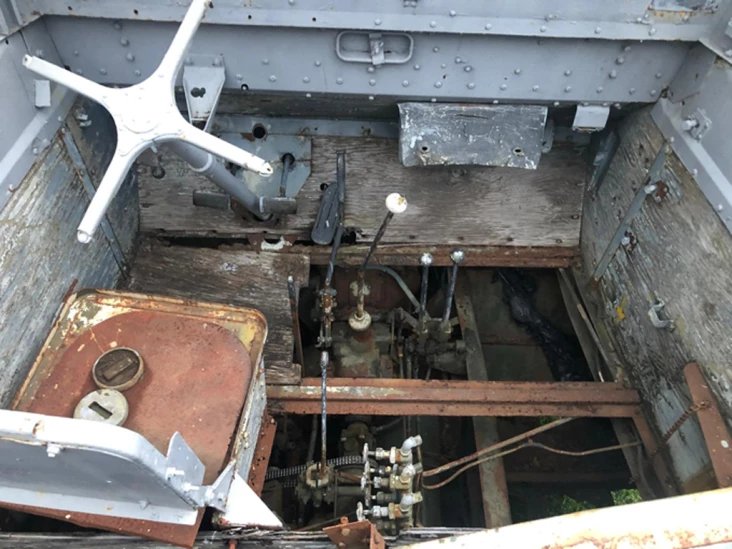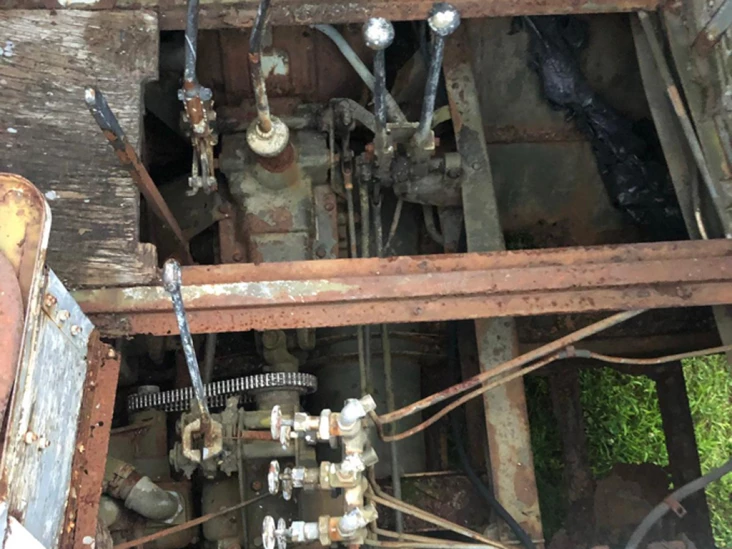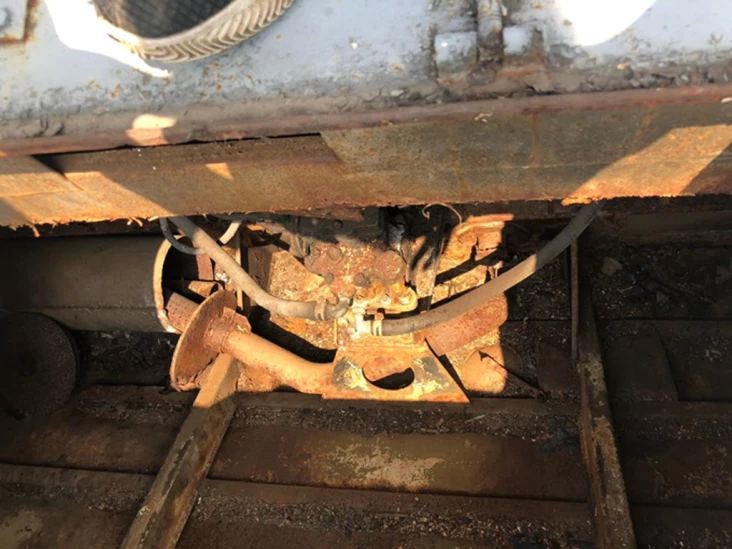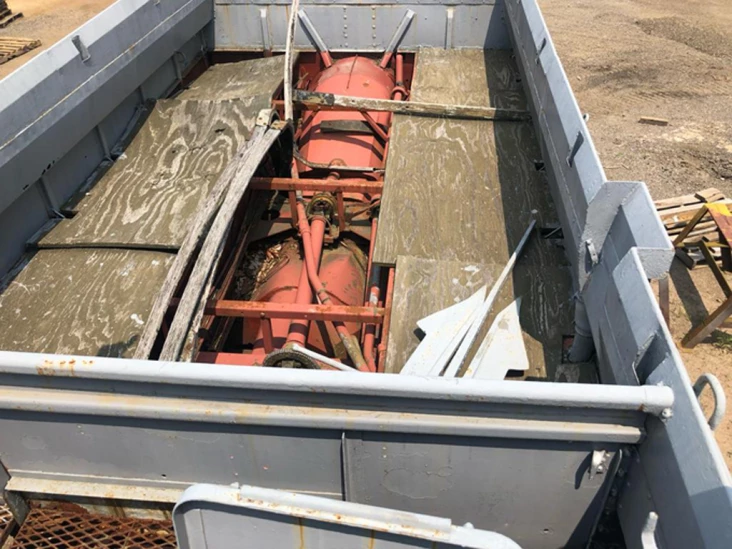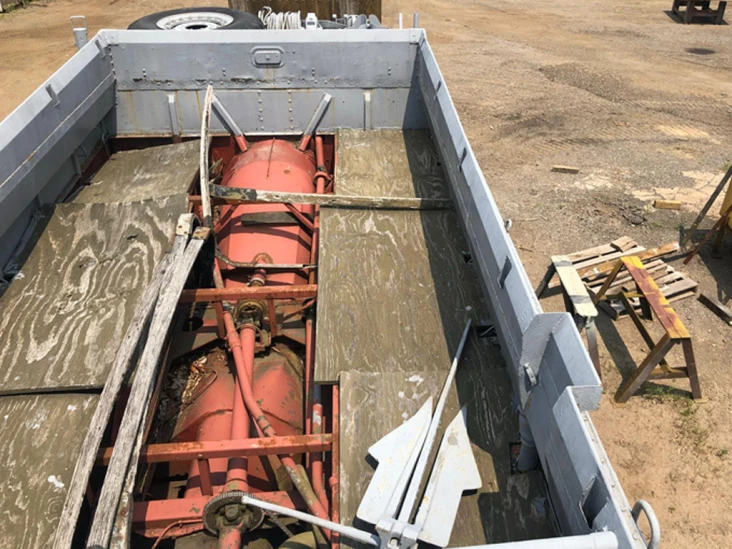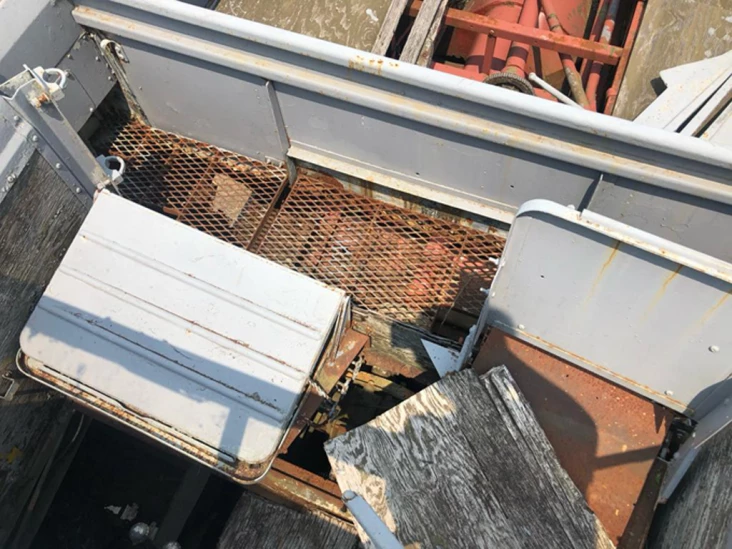GMC DUKW 353
This DUKW isn’t for the fainthearted. Its mostly complete but sheet metal in is poor condition. If sheet metal work is your thing, this is an rewarding challenge. It might take some time but the forecast of sailing this WWII duck on a sunny day on a lake nearby will keep you going for sure.
Movie: GMC CCKW 353 (DUKW)
Register and bid
Registration is required prior to bidding. So, make sure you have completed the registration.
Details
conditions
This DUKW isn’t for the fainthearted. Its mostly complete but sheet metal in is poor condition. If sheet metal work is your thing, this is an rewarding challenge.
We advise you to thoroughly inspect this DUKW during a viewing day to obtain an accurate assessment of its current condition.
Technical details
- Manufacturer
- General Motors Corporation
- Model
- DUKW 353
- Manufacturing date
- WW II
- Serial number
- Unknown
- Length
- 31 ft (9,45 m)
- Width
- 8 ft (2,44 m)
- Height (top up)
- 8’10” (2,69 m)
- Height (top down)
- 7 ft 1 in (2,16 m)
- Weight
- 13.600 lb (6.200 kg)
- Max. speed (land)
- 50 mph (80 km/h)
- Max speed (water)
- 6,4 mph (10 km/h)
- Operational range
- 400 mi (650 km)
- Main armament
- Ring mount for .50 inch M2 Browning machine gun. (Fitted to one of four DUKW’s)
- Engine
- GMC Model 270, 91 hp
- Crew
- 1 driver and 24 troops, or 5,000 lbs (2,300kg) payload
- Production numbers
- 21.147
History
The DUKW (also known as Duck) is a six-wheel-drive amphibious modification of the 2+1⁄2-ton CCKW trucks used by the U.S. military during World War II and the Korean War.
Designed by a partnership under military auspices of Sparkman & Stephens and General Motors Corporation (GMC), the DUKW was used for the transportation of goods and troops over land and water. Excelling at approaching and crossing beaches in amphibious warfare attacks, it was intended only to last long enough to meet the demands of combat.
The DUKW was built around the GMC AFKWX, a cab-over-engine (COE) version of the GMC CCKW six-wheel-drive military truck, with the addition of a watertight hull and a propeller. It was powered by a 269.5 cu in (4 L) GMC Model 270 straight-six engine. A five-speed overdrive transmission drove a transfer case for the propeller, then a two-speed transfer case to drive the axles. The propeller and front axle were selectable from their transfer case. A power take-off on the transmission drove an air-compressor and winch.
A high-capacity bilge pump system kept it afloat if the thin hull was breached by holes up to 2 inches (51 mm) in diameter. One in four DUKWs mounted a .50-caliber Browning heavy machine gun on a ring mount.
The DUKW was the first vehicle to allow the driver to vary the tire pressure from inside the cab. The tires could be fully inflated for hard surfaces such as roads and less inflated for softer surfaces, especially beach sand. This added to its versatility as an amphibious vehicle. This feature is now standard on many military vehicles.
The DUKW was supplied to the U.S. Army, U.S. Marine Corps and Allied forces, and 2,000 were supplied to Britain under the Lend-Lease program; 535 were acquired by Australian forces, and 586 were supplied to the Soviet Union, which built its own version, the BAV 485, after the war. DUKWs were initially sent to Guadalcanal in the Pacific theater, but were used by an invasion force for the first time in the European theater, during the Sicilian invasion, Operation Husky, in the Mediterranean. They were also used on the D-Day beaches of Normandy and in the Battle of the Scheldt, Operation Veritable, and Operation Plunder.
After World War II, reduced numbers were kept in service by the United States, Britain, France, and Australia, with many stored pending disposal. Australia transferred many to Citizens Military Force units. Also many were used after WWII by civilian organizations such as the police, fire departments, and rescue units. Surviving DUKWs have since found popularity among WWII collectors and as tourist crafts in marine environments.
Why buy an amphibious vehicle?
Amphibious vehicles captivate collectors due to their rarity, uniqueness, and historical significance. These distinctive vehicles, capable of seamlessly transitioning between land and water, represent a niche segment in automotive and military history. Collectors are drawn to their unconventional design and engineering, appreciating the innovative solutions required for dual-terrain functionality. Often associated with military applications or iconic moments in transportation evolution, these vehicles become prized additions to collections, showcasing technological advancements and adaptive capabilities. The scarcity of amphibious models contributes to their allure, with enthusiasts relishing the opportunity to own a piece of unconventional automotive heritage. Their dual-purpose nature and ability to evoke a sense of adventure also appeal to collectors seeking distinctive and conversation-starting additions to their portfolios. In the world of collectibles, amphibious vehicles stand out as not just mechanical artifacts but as symbols of ingenuity, versatility, and a bygone era of exploration. The thrill of driving into water, becoming afloat, and then sail off from the shore is a feeling that cannot be described. It needs to be felt!
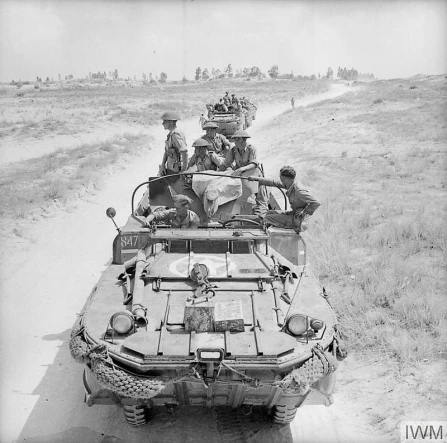
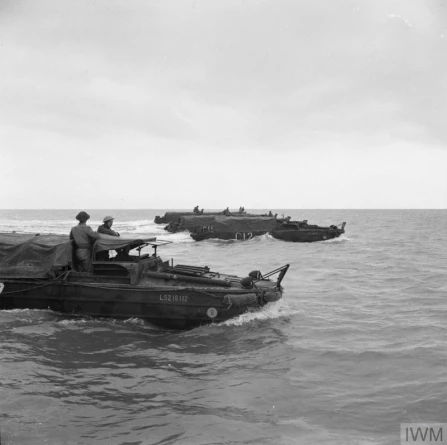
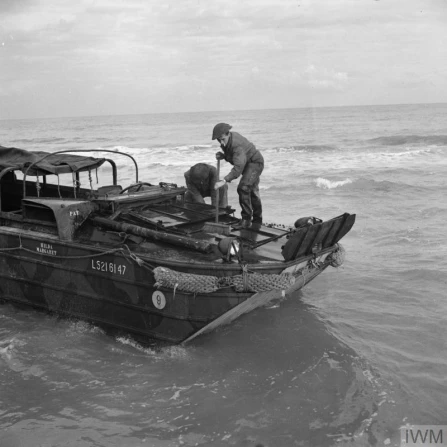
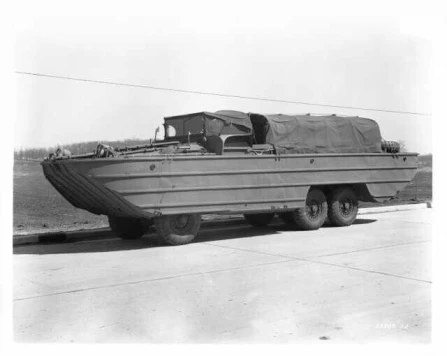
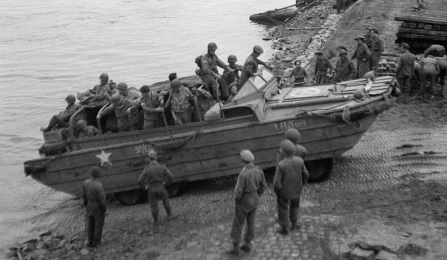
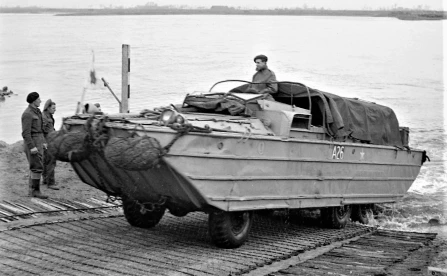
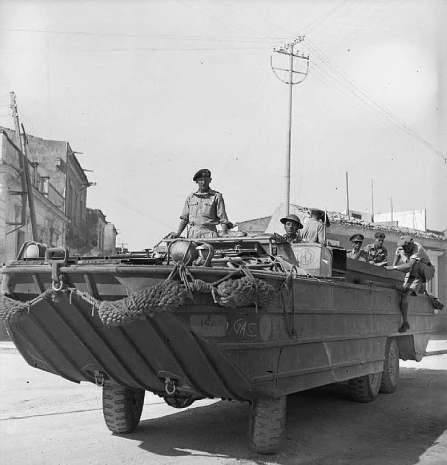
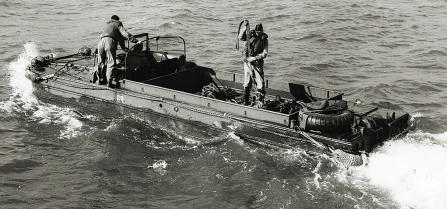
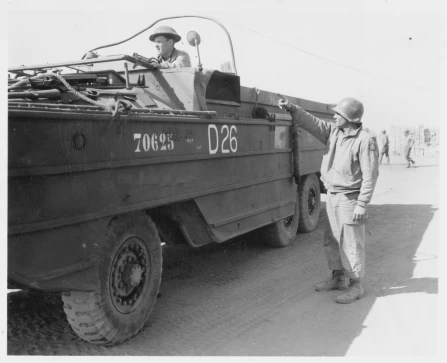
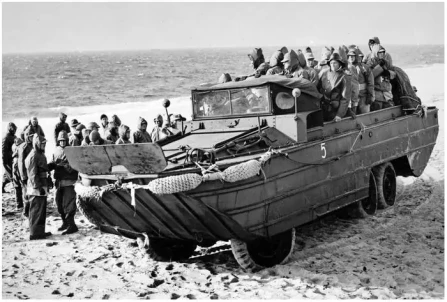
Note to buyer
LOCATION
The location of any Lot is indicated with the specific lot number. Specific address details will be provided upon request and to the successful bidder / Buyer.
INSPECTION(S)/ VIEWING DAYS
Viewing days are available for this lot. Check the viewing day page for detailed information.
Given the fact that these are often very special items whose condition, no matter how hard we try, cannot always be described 100% completely, we really recommend that you make use of this.
IMPORTANT DATES
Bidding Open: Friday April 19 2024 00:00 CET (Dutch American Friendship Day),
Bidding Ends:
Saturday April 20 2024 (Part 1 vehicles)
TIMES
Amsterdam NL (CET): 06:00 PM (18:00)
London: 05:00 PM (17:00)
New York USA: 12:00 AM (12:00)
Sydney AUS: 04:00 AM (04:00),next day
BUYER’S PREMIUM
On all lots a buyer’s premium of 16,5% of the hammer price is charged. Over this buyer’s premium a 21% sales tax (VAT) will be applicable.
PARTS, ACCESSOIRIES & MILITARIA
The batches of spare parts, various accessories and militaria are sold in as-is condition and delivered without any guarantee of functioning.
VEHICLES & VEHICLE RELATED EQUIPMENT
Cars, motorcycles, trucks, cannons or howitzers, armored vehicles, and tanks are sold in as-is condition, with no technical guarantee and guarantee of authenticity and with or without registration.
ARMS & WEAPONS
The Auction House will not supply ANY item unless the correct paperwork and licensing – if needed – has been supplied by the Buyer in full.
If required and applicable (fire)arms can be made inoperable or permanently disabled by BAIV in The Netherlands as being a licensed Arms & Weapons Dealer Registration Nr. NL20191618779. In this case all relevant cost will be charged to the Buyer in addition and have to be paid in advance in full. Collection by appointment only!
MARGIN/ VAT
However, for most of the lots 21% sales tax (VAT) over the hammer price will be not applicable, it might be that in some specific cases sales tax (VAT) over the hammer price will be charged. In such a case this will be specifically specified in the lot description. For all other lots the margin scheme will be applicable. For more info see our General Conditions of Sale Article 9 on our website; www.tracksandtrade.com
COLLECTION
Due to our participation in the commemorations of D-DAY in Normandy France collection of all lots is scheduled for the period June 17 till 28 2024. However, for buyers who want to participate with their purchased lot at the 80th Anniversary Commemorations in Normandy this can of course be deviated from. In such a case please let us know soonest.
import and exportDepending on the destination and content of the Lot the Buyer shall obtain an International Import Certificate / End User Certificate. Some of the items listed in the auction may require special licenses or permits or existing documents must be prepared for export. If this is relevant, Tracks & Trade will take care of this. The applicable costs will be charged to the successful bidder. Please email [email protected] if you have any questions or concerns. No item will be allowed to be collected without 100% of all legal requirements being fulfilled.
DELIVERY
Removal of lots must be completed by June 28 2024 after full payment and 100% coverage of all legal requirements. No storage fees will be applicable until that date.
Shipping and packing costs and special costs that arise for loading special items, such as crane costs or costs for hiring special equipment etc., will be charged to the Buyer on the basis of actual costs + a surcharge of 10%. Naturally, you can count on us when it comes to the shipment of your purchases. We are happy to take care of that!
STORAGE
Lots not picked up by Buyers before June 28 2024 will be returned to secure storage at Buyer’s expense. In this case storage fees will be applied as follows:
Parts & accessories: € 25,- / lot / week.
Cars and motorcycles: € 50,- / lot / week.
Armored vehicles, tanks, cannons etc. € 75,- / lot / week.
Listed storage fees excluding 21% VAT.
NOTE
If you have any specific questions, please contact us either by telephone (+31 6 518 22 502) or E-mail ([email protected]). We are happy to help and support you through the entire process. We will do our utmost to please and comfort you.
So, don’t hesitate to contact us if you have any questions!
GENERAL CONDITIONS
All information and transactions are subject to the general terms and conditions (Version 2.0 dated 29-04-2022). For more detailed information visit our website.
Shipping Information
After buying a classic military vehicle or other items such as cannons, planes, howitzers and tanks, there are several steps you would typically need to take:
Legalities
In principle, no special permit is required for unarmored wheeled and tracked vehicles. In many cases, an export procedure that is comparable to that for exporting classic cars and motorcycles is sufficient. Military collectables older than 75 years and with a value over Euro 50k are often considered National Heritage. In such cases an export permit must be requested from the National Ministry of Culture of the exporting country. Tanks, howitzers and self-propelled or towed cannons often require specific permits that are highly dependent on the country of shipment and the country of destination. In such a case first ensure that you apply for the necessary permits, licenses, and other paperwork required to own and operate such an item in your jurisdiction. This may involve registering the item with the appropriate authorities and complying with any regulations regarding its ownership and use. In such a case it is advisable to contact us in advance because we have many decades of experience in the import and export of Classic Military Heritage. Based on this experience, we can generally quickly provide feedback on what applies to you. This is especially relevant because regulations in this regard change every now and then and sometimes, we also have to deal with export-restrictions. In short: if you want to be sure, contact us in time to avoid difficulties in a later stage.
Storage
Find a suitable storage location for your collectable, preferably a secure and legal place where you can keep it when not in use. This could be a garage, warehouse, or even a specially designed storage facility or museum.
Transportation
After you have all paperwork in place next step will be the (oversees) transport to your desired location. This may involve hiring specialized transport and broker services due to permits, size and weight. Als in this case we can support you with organizing the transport or make sure you get in contact with some experts.
Maintenance and Restoration
Depending on the condition of your military collectable our partner BAIV can help you with maintenance and restoration work to ensure that it is safe and operational. This could involve relatively easy maintenance and repair, service till a Class-A restoration. In such a case please contact BAIV (link to BAIV website).
Training
If you intend to operate a vehicle then make sure you have manuals that describe how the operate vehicle. Nowadays there are numerous reprints available on the Internet that explain you in a playful way how to drive and operate your vehicle. This is often a team effort, which makes owning such a vehicle extra attractive. If required, you can also involve hiring a professional instructor or attending specialized training courses to learn how to drive and maintain it safely. In such a case, our partner BAIV can also support you.
Insurance
Consider obtaining insurance coverage for your vehicle to protect yourself against any potential accidents or liabilities that may arise from owning and operating it. Often there are specialized insurance companies offering these kinds of services. Local military vehicle clubs often also know their way around the specific options offered by insurance companies.
Enjoyment
Finally, once everything is in place, you can enjoy owning and, if permitted, operating your classic military vehicle, cannon or howitzer. Whether it's for display purposes or for participating in historical reenactments, owning such a great unit can be a unique and rewarding experience.
Feel free to get in touch
